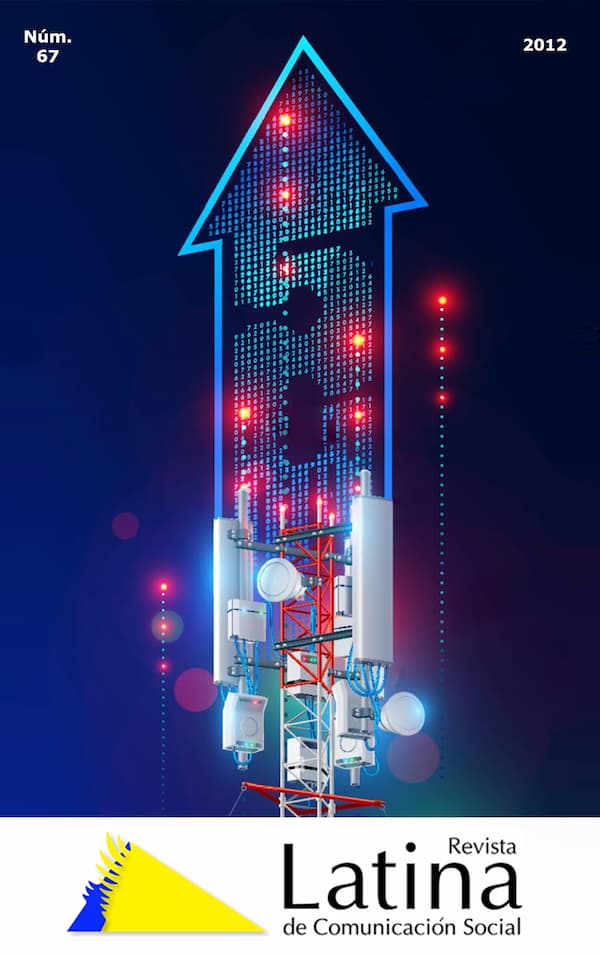The Way of Saint James and Xacobeo 2010 on tourist websites of autonomous regions
DOI:
https://doi.org/10.4185/RLCS-067-946-023-046Keywords:
The Way of Saint James, Xacobeo, communication, website, autonomous regionsAbstract
This article analyses all tourist websites from the autonomous regions of Spain where the routes of the Way of Saint James go through. Considering that both the Way of Saint James and Xacobeo 2010 are important tourist opportunities for these autonomous regions, the main objective of this investigation is to determine the treatment they have given to them on their websites; for this purpose, two points have been taken into account, firstly, the quality of the websites themselves and, secondly, to verify that the autonomous regions have considered the Way of Saint James and Xacobeo 2010 as a tourist promotion for their own regions. All through the investigation, bibliography has been revised, concepts have been defined; the variables that measure the parameters of a website quality control have been chosen and an analysis of tourist websites contents and design has been done. In conclusion, the Galician website is the one which has more information about the Way of Saint James and Xacobeo 2010. The remaining regions offer on their websites vague information about the Way of Saint James and Xacobeo 2010, which differs from one website to another. Due to the significance of the tourist event Xacobeo 2010 and the importance of Internet as a media of communication, the objective of the group of investigators is to do new analyses of the institutional websites once the year 2010 has finished.
Downloads
References
Cánoves-Valiente, G. (2006): “Turismo religioso en Montserrat: montaña de fe, montaña de turismo”. En Cuadernos de turismo, 18, (pp. 63-76), Universidad de Murcia, recuperado el 10 de diciembre de 2009, de http://revistas.um.es/turismo/article/viewFile/17881/17251
Crowder, D. y Bailey, A. (2005): Creación y diseño Web. Editorial Anaya Multimedia, Madrid.
De-la-Torre, R. y Gutiérrez-Zúñiga, C. (2005): “La lógica del mercado y la lógica de la creencia en la creación de mercancías simbólicas”. En Desacatos, 18, mayo-agosto 2005, pp. 53-70, recuperado el 30 de abril de 2008, de https://desacatos.ciesas.edu.mx/index.php/Desacatos/article/view/1312/1153
Moragas-Spà, M. (2005): “Publicidad institucional: comunicación y civismo”. En Civisme: les claus de la convivència, monográfico 6, Barcelona Metròpolis mediterrània, (pp. 1-6), recuperado el 19 de diciembre de 2009, de http://www.publicacions.bcn.es/b_mm/ebmm_civisme/072-077.pdf
Esteve-Secall, R. (2009): Turismo y religión. Aproximación histórica y evaluación del impacto económico del turismo religioso. Jornadas de delegados de pastoral de turismo, Ávila, 11 – 13 de noviembre de 2009, recuperado el 21 de enero de 2010, de https://www.diocesisoa.org/documentos/ficheros/Esteve_Rafael_-_texto_786.pdf
Feliu-Albaladejo, À. (2009): “Publicidad y cambio social. Nuevas realidades, ¿nuevos discursos?”. En Feliu García (editor), Comunicación. Memoria, historia, modelos, Madrid, Edipo, pp. 396-406.
González-Romero, J. M. y Cordero-Valle, J. M. (2004): Diseño de Páginas web, Editorial: McGrawHill 2ºEd, Madrid.
Hassan-Montero, Y. y Martín-Fernández, F. J. (2003): “Qué es la Accesibilidad Web”. En No Solo Usabilidad, 2, 2003. , recuperado el 15 de marzo de 2010, de http://www.nosolousabilidad.com/articulos/accesibilidad.htm#jackson).
Shawn-L, H. (2002): “Understanding Web Accessibility”. En Constructing Accessible Web Sites. Glasshaus: April 2002. Recuperado el 2 de febrero de 2010, de http://uiaccess.com/understanding.html
Hernández-Rodríguez, A. J. (2002): “Planificar la comunicación”. En Revista Latina de Comunicación Social, 48, recuperado el 17 de octubre, de http://www.revistalatinacs.org/_2008/09_alicante/4812ajhernandez.htm
Hoffman, D. y Novak, T. (1995): “Marketing in hypermedia CMEs: conceptual foundations”. En Working Paper 1, Project 2000: Research Program on Marketing in Computer-Mediated Environments, (pp. 1-38) , recuperado el 10 de octubre de 2009, de http://citeseerx.ist.psu.edu/viewdoc/download?doi=10.1.1.39.1994&rep=rep1&type=pdf
Larrondo-Ureta, A. (2008): "Estrategias de producción online para el tratamiento informativo en profundidad". En Revista Latina de Comunicación Social, 63, (pp 473-479). La Laguna (Tenerife): Universidad de La Laguna, recuperado el 22 de enero de 2010, de http://www.revistalatinacs.org/08/40_797_63_bilbao/latina_art797.pdf
Nielsen, J. (1994): "Ten Usability Heuristics", recuperado el 12 de febrero de 2010, de https://www.heurio.co/nielsens-10-usability-heuristics
Nielsen, J. (2001): “Beyond Accessibility: Treating People with Disabilities as People”, recuperado el 12 de febrero de 2010, de https://www.nngroup.com/articles/beyond-accessibility-treating-users-with-disabilities-as-people/
Parra, D. et al. (2008): "Proceso de transformación de los cibermedios: los retos de las empresas periodísticas". En Revista Latina de Comunicación Social, 63, (pp 63-70). La Laguna (Tenerife): Universidad de La Laguna, recuperado el 25 de marzo de 2010, de https://www.redalyc.org/articulo.oa?id=81912006006
Rubio-Gil, M. Á. y De-Esteban-Curiel, J. (2008): “Religious Events as Special Interest Tourismo. A Spanish Experience”. En Pasos, 6(3), pp. 419-433, recuperado el 25 de enero de 2010, de http://www.pasosonline.org/Publicados/6308/PS0308_3.pdf
Salvador-Oliván, J. A. y Angós-Ullate, J. A. (1999): “Criterios para evaluar la calidad de las fuentes de información en Internet”. En Scire: representación y organización del conocimiento, Norteamérica, 5(2), (pp 99-113), recuperado el 26 de enero de 2010, de http://ibersid.eu/ojs/index.php/scire/article/view/1119/1101
Santos-Solla, X. (1999): “Mitos y realidades del Xacobeo”. En Boletín de la AGE, 28, pp. 103-117, recuperado el 13 de noviembre de 2009, de http://dialnet.unirioja.es/servlet/articulo?codigo=1318654
Santos-Solla, X. (2002): “Pilgrimage and Tourism at Santiago de Compostela». En Tourism Recreation Research 27(2), pp. 41-50.
Sicilia-Piñero, M. y Pérez-Alonso, R. (2007): “Internet como herramienta del Marketing de ciudades. Análisis de contenido de las webs de las capitales europeas”. En Investigación y Marketing, 96, 30-40.
Tognazzini, B. (2003): “First Principles of Interaction Design”, recuperado el 2 de febrero de 2010 de http://www.asktog.com/basics/firstPrinciples.html








